Region: South Asia
Area Total: 3,287,240 km2Coast Line: Indian Ocean, Arabian Sea, Bay of Bengal
Capital: New Delhi

KARNATAKA
Capital : BANGALORE
Area : 191,791 sq km
Population : 52,850,562 (2001 Census)
Languages : Kannada, Urdu, Telugu, Tamil, Marathi, Tulu, Hindi, Konkani, Malayalam, Kodava TakkMajor Festivals : Dassera, Deepavali. Ugadi, Mahashivaratri, Krishna Janam Ashtami, Ganesh Chaturti, Eid Al Fitr, Eid Al Adha, Makar Sankranti,Vairamudi Brahmotsava etc.
Karnataka , pronounced is a state in South West India. It was created on 1 November 1956, with the passing of the States Reorganisation Act. Originally known as the State of Mysore, it was renamed Karnataka in 1973.
State Legislative building built in Neo-Dravidian style
Karnataka is bordered by the Arabian Sea to the west, Goa to the northwest, Maharashtra to the north, Andhra Pradesh to the east, Tamil Nadu to the southeast, and Kerala to the southwest. The state covers 5.83% of the total geographical area of India. It is the eighth largest Indian state by area, the ninth largest by population and comprises 30 districts. Kannada is the official and most widely spoken language.
Though several etymologies have been suggested for the name Karnataka, the generally accepted one is that Karnataka is derived from the Kannada words karu and nādu, meaning elevated land. Karu nadu may also be read as Karu (black) and nadu (region), as a reference to the black cotton soilfound in the Bayaluseeme region of Karnataka. The British used the wordCarnatic (sometimes Karnatak) to describe both sides of peninsular India, south of the Krishna River.
Mysore Palace
With an antiquity that dates to the paleolithic, Karnataka has also been home to some of the most powerful empires of ancient and medieval India. The philosophers and musical bards patronised by these empires launched socio-religious and literary movements which have endured to the present day. Karnataka has contributed significantly to both forms of Indian classical music, the Carnatic (Karnataka Music) and Hindustani traditions. Writers in the Kannada language have received the most number ofJnanpith awards in India. Bangalore is the capital city of the state and is at the forefront of the rapid economic and technological development that India is experiencing.
HISTORY
The history of Karnataka can be traced back to a Paleolithic hand-axe culture evidenced by discoveries of, among other things, hand axes and cleavers in the region. Evidence of neolithic and megalithic cultures have also been found in the state. Gold discovered in Harappa was found to be imported from mines in Karnataka, prompting scholars to hypothesize about contacts between ancient Karnataka and the Indus Valley Civilization in 3000 BCE. Prior to the third century BCE, most of Karnataka was part of the Nanda Empire before coming under the Mauryan empire of Emperor Ashoka. Four centuries of Satavahana rule followed, allowing them to control large areas of Karnataka. The decline of Satavahana power led to the rise of the earliest native kingdoms, the Kadambas and the Western Gangas, marking the region's emergence as an independent political entity. The Kadamba Dynasty, founded by Mayurasharma, had its capital at Banavasi; the Western Ganga Dynasty was formed with Talakad as its capital
these were also the first kingdoms to use Kannadain administration, as evidenced by the Halmidi inscription and a fifth-century copper coin discovered at Banavasi. These dynasties were followed by imperial Kannada empires such as the Badami Chalukyas, the Rashtrakuta Empire of Manyakheta and the Western Chalukya Empire, which ruled over large parts of the Deccan and had their capitals in what is now Karnataka. The Western Chalukyas patronised a unique style of architecture and Kannada literature which became a precursor to the Hoysala art of 12th century.
Parts of modern-day Karnataka were occupied by the Chola Empire between 990-1210 AD. This process started under Rajaraja Chola I (985-1014) and continued under his son Rajendra Chola I (1014–1044). Initially "Gangapadi, Nolambapadi and Tadigaipadi' all parts of modern Mysore, were conquered and annexed' under Raja Raja Chola I. Rajendra Chola I "marched up to Donur, he also captured Banvasi, a good part of the Raichur doab and sacked Manyakheta" itself, which was the Western Chalukyan capital. During the time of the Chalukya ruler Jayasimha after his defeat by Rajendra Chola I, theTungabhadra river was recognized tacitly as the boundary between the two kingdoms. During the rule of Rajadhiraja Chola I (1042–1056), Dannada, Kulpak, Koppam, the fortress of Kampili, Pundur, Yetagiri and the Chalukyan capital Kalyani were sacked. In 1053, Rajendra Chola II after defeating the Chalukyans in war advanced to Kollapura where he erected a pillar of victory before returning to his capital at Gangaikondacholapuram. In 1066, the Western Chalukya ruler Somesvara's forces were defeated by the next Chola ruler Virarajendra, who then again defeated the Western Chalukyas atKudalasangama, and set up a pillar of victory on the banks of the Tungabhadra. In AD 1075 Kulottunga Chola I won a victory against Vikramaditya VI at Nangili in Kolar district and made himself the master of Gangavadi. The Cholas eventually lost Gangavadi in 1116 to the Hoysalas under Vishnuvardhana.
At the turn of the first millennium, the Hoysalas gained power in the region. Literature flourished during this time, which led to the distinctive Kannada literary metres and the construction of temples and sculptures adhering to the Vesara style of architecture. The expansion of the Hoysala Empire brought parts of modern Andhra Pradesh and Tamil Naduunder its rule. In the early 14th century, Harihara and Bukka Raya established the Vijayanagara empire with its capital,Hosapattana (later named Vijayanagara), on the banks of the Tungabhadra River in the modern Bellary district. The empire rose as a bulwark against Muslim advances into South India, which it completely controlled for over two centuries.
In 1565, Karnataka and the rest of South India experienced a major geopolitical shift when the Vijayanagara Empire fell to a confederation of Islamic sultanates in the Battle of Talikota. The Bijapur Sultanate, which had risen after the demise of the Bahmani Sultanate of Bidar, soon took control of the Deccan; it was defeated by the Moghuls in the late 17th century. The Bahamani and Bijapur rulers encouraged Urdu and Persian literature and Indo-Saracenic architecture, the Gol Gumbaz being one of the high points of this style. During the sixteenth century, Konkani Hindus migrated to Karnataka, mostly from Salcette, Goa, while during the seventeenth and eighteenth century, the Mangalorean Catholicsmigrated to South Canara, in Karnataka, especially from Bardes, Goa, as a result of food shortages, epidemics and heavy taxation imposed by the Portuguese.
In the period that followed, parts of northern Karnataka were ruled by the Nizam of Hyderabad, the British, and other powers. In the south, the Mysore Kingdom, formervassals of the Vijayanagara Empire, was briefly independent. With the death ofKrishnaraja Wodeyar II, Haidar Ali, the commander-in-chief of the Mysore army, gained control of the region. After his death, the kingdom was inherited by his son Tippu Sultan. To contain European expansion in South India, Haidar Ali and later Tippu Sultan fought four significant Anglo-Mysore Wars, the last of which resulted in Tippu Sultan's death and the incorporation of Mysore into the British Raj in 1799. The Kingdom of Mysore was restored to the Wodeyars and Mysore remained a princely state under the British Raj.
As the "doctrine of lapse" gave way to dissent and resistance from princely states across the country, Kittur Chennamma, Sangolli Rayanna and others spearheaded rebellions in Karnataka in 1830, nearly three decades before the Indian Rebellion of 1857. Other uprisings followed, such as the ones at Supa, Bagalkot, Shorapur, Nargundand Dandeli. These rebellions which coincided with the 1857 war of independence were led by Mundargi Bhimarao, Bhaskar Rao Bhave, the Halagali Bedas, Raja Venkatappa Nayaka and others. By the late 19th century, the freedom movement had gained momentum; Karnad Sadashiva Rao, Aluru Venkata Raya, S. Nijalingappa, Kengal Hanumanthaiah, Nittoor Srinivasa Rauand others carried on the struggle into the early 20th century.
After India's independence, the Maharaja, Jayachamarajendra Wodeyar, allowed his kingdom's accession to India. In 1950, Mysore became an Indian state of the same name; the former Maharaja served as its Rajpramukh (head of state) until 1975. Following the long-standing demand of the Ekikarana Movement, Kodagu and Kannada speaking regions from the adjoining states of Madras, Hyderabad and Bombay were incorporated into the Mysore state, under the States Reorganization Act of 1956. The thus expanded state was renamed Karnataka, seventeen years later, in 1973. In the early 1900s through the post-independence era, industrial visionaries such as Sir Mokshagundam Visvesvarayya born inMuddenahalli, near Kanivenarayanapura, Chikballapur District played an important role in the development of Karnataka's strong manufacturing and industrial base
Bangalore, the capital city:
Bangalore Palace
Located on the Mysore Plateau in southwestern Karnataka, Bangalore has an estimated metropolitan population of 6.1 million (2006), making it India's third-largest city and fifth-largest metropolitan area. Though historical references to the city predate 900 CE, a written history of continuous settlement exists only from 1537, when Kempe Gowda I, whom many regard as the architect of modern Bangalore, built a mud fort in the city and established it as a province of the Vijayanagara Empire.
Colonel Bailey's Dungeon
This Dungeon was named after Colonel Bailey who died here in 1782 AD. It was used to imprison British prisoners like Captain Baird and Rulay, Colonel Brithwhite Sampson, Frazer and Lindsay by Tipu Sultan. This dungeon lies north of Ranganatha Swamy temple. The oblongbastion referred to as Sultan Bateri conceals the vaulted dungeon measuring 30.5 mts x 12.2 mts. built in brick and mortar. In the dungeon, the prisoners were chained to the stone slabs fixed on the east, north and the west walls.
During the British Rule, Bangalore developed as a center for colonial rule in South India. The establishment of the Bangalore Cantonment brought in large numbers of migrant Tamil, Telugu and North Indian workers for developing and maintaining the infrastructure of the cantonment. The city's temperate climate, which is milder than those of other cities in the country, has been a major attraction to people from other parts of India.
History
The inscription stone found near Begur reveals, that the district was part of the Ganga kingdom ruled from Gangavadi until 1004 and was known as 'Benga-val-oru', the City of Guards in old Kannada. The Cholas of Tamil Nadu captured the city in 1015 AD and collected taxes through the local chieftans until 1116.After conquering the Sultanate of Bijapur, the Mughals then conquered Bangalore, which was then ruled by Shivaji's brother Vyankoji Bhonsale as a jagir (fief) of Bijapur in 1686; Vyankoji retreated further south.
When Hyder Ali died, his son Tipu Sultan deposed the weak Wodeyar, proclaimed himself Sultan and renamed the kingdom the Sultanate of Khodadad (Khodadad or Khudadad means "given by God").
Upon the passing of Tipu Sultan, the Wodeyars returned to the throne of Mysore, and therefore Bangalore, although only as figureheads. Bangalore remained part of British East India until Indian independence in August, 1947.
Bangalore is a former British military cantonment that expanded after 1881. The names of many of its streets are derived from military nomenclature — Artillery Road, Brigade Road, Infantry Road and Cavalry Road. The South Parade (now known as Mahatma Gandhi Road, was to the south of the Parade Ground. A resident to the Kings of Mysore lived within the cantonment area and his quarters was called the Residency and hence the name Residency Road.
Around 1883, three developments were added to the cantonment — Richmond Town, Benson Town and Cleveland Town. Today the metropolitan area extends from the Peenya Industrial Area in the west to Indiranagar and Whitefield in the east; from Yelahanka Town in the north, to J.P. Nagar in the south.
In the 1960's and 1970's an elite neighborhood was developed in the former gardens of the Bangalore Palace, now called Sadhashivnagar. The area is now home to many of the wealthy members of Bangalore society, celebrities and politicians.
Lal Bagh Botanical Garden is considered to be one of the most diverse botanical garden in South Asia. Founded in the 18th century, this is one of the most beautiful parks of India botany,
Lal Bagh is a 240 acre (971,000 sq.m. - almost 1 km²) Garden and is located on the southern part of Bangalore. It holds a number of flower shows, especially on the Republic Day (26th January). The garden has over 1,000 species of flora.
Lal Bagh Botanical Garden was commissioned by the ruler of Mysore, Hyder Ali. Hyder Ali started building the Garden of Lal Bagh in the year 1760 and his son Tipu Sultan completed the garden. The garden derived its name 'Lal Bagh'because of a collection of red roses that remain blooming all through the year in this garden. Lal Bagh Gardens was known Rose and Cypress Garden till 1856. King Hyder Ali's father was in the service of Dilawar Khan, Viceroy of Moguls. Dilawar Khan had a passion for setting up many gardens across Mysore. Among them the famous ones are Mogul gardens at Sira near Tumkur, Lalbagh at Srirangapatna, a garden at Malavalli, Lalbagh Gardens in Bangalore.
Lalbagh Garden
.jpg)
Lalbagh Garden
glass house at Lalbagh
VRINDAVAN GARDEN, MYSORE:World Famous Terrace Gardens with Musical Fountains which gets transformed into a dreamland by night with swirling waters, colourful lights and melodious music...

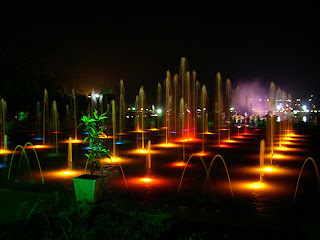
vrindavan garden - night view

Dancing Musical Fountains at Vrindavan Garden
Fountain view of KRS Dam, Mandya
Banyan Tree at Mysore Road near Bangalore
CULTURE
The diverse linguistic and religious ethnicities that are native to Karnataka combined with their long histories have contributed immensely to the varied cultural heritage of the state. Apart from Kannadigas, Karnataka is home to Tuluvas, Kodavas and Konkanis. Minor populations of Tibetan Buddhists and tribes like theSoligas, Yeravas, Todas and Siddhis also live in Karnataka. The traditional folk arts cover the entire gamut of music, dance, drama, storytelling by itinerant troupes, etc. Yakshagana of Malnad and coastal Karnataka, a classical dance drama, is one of the major theatrical forms of Karnataka. Contemporary theatre culture in Karnataka remains vibrant with organizations like Ninasam, Ranga Shankara, Rangayana and Prabhat Kalavidaru continuing to build on the foundations laid by Gubbi Veeranna, T. P. Kailasam, B. V. Karanth, K V Subbanna, Prasanna and others. Veeragase, Kamsale, Kolata and Dollu Kunitha are popular dance forms. The Mysore style of Bharatanatya nurtured and popularised by the likes of the legendary Jatti Tayamma continues to hold sway in Karnataka and Bangalore also enjoys an eminent place as one of the foremost centers of Bharatanatya.
Karnataka also has a special place in the world of Indian classical music with both Karnataka (Carnatic) and Hindustani styles finding place in the state and Karnataka has produced a number of stalwarts in both styles. While referring to music the word 'Karnataka', the original name given to the South Indian classical music does not mean the state of Karnataka. The Haridasa movement of the sixteenth century contributed seminally to the development of Karnataka (Carnatic) music as a performing art form. Purandara Dasa, one of the most revered Haridasas, is known as the Karnataka Sangeeta Pitamaha ('Father of Karnataka a.k.a.Carnatic music'). Celebrated Hindustani musicians like Gangubai Hangal, Mallikarjun Mansur, Bhimsen Joshi, Basavaraja Rajaguru, Sawai Gandharva and several others hail from Karnataka and some of them have been recipients of the Kalidas Samman, Padma Bhushan and Padma Vibhushan awards.
Gamaka is another classical music genre based on Carnatic music that is practiced in Karnataka.Kannada Bhavageete is a genre of popular music that draws inspiration from the expressionist poetry of modern poets. The Mysore school of painting has produced painters like Sundarayya, Tanjavur Kondayya, B. Venkatappa and Keshavayya. Chitrakala Parishat is an organisation in Karnataka dedicated to promoting painting, mainly in the Mysore painting style.
Saree is the traditional dress of women in Karnataka. Women in Kodagu have a distinct style of wearing the saree, different from the rest of Karnataka. Dhoti, known as Panche in Karnataka is the traditional attire of men. Shirt, Trousers and Salwar kameez are widely worn in Urban areas.Mysore peta is the traditional headgear of southern Karnataka, while the pagadi or pataga (similar to the Rajasthani turban) is preferred in the northern areas of the state.
Cuisine :
Ragi-mudda - one of the popular food
Jowar wada
Food served on traditional patravali
Rice and Ragi form the staple food in South Karnataka, whereas Jolada rotti, Sorghum is staple to North Karnataka. Bisi bele bath, Jolada rotti, Ragi mudde, Uppittu, Masala Dose and Maddur Vade are some of the popular food items in Karnataka. Among sweets,Mysore Pak, Belgaavi Kunda, Gokak karadantu, and Dharwad pedha are popular. Apart from this, coastal Karnataka and Kodagu have distinctive cuisines of their own. Udupi cuisine of coastal Karnataka is popular all over India.
EDUCATION
As per the 2001 census, Karnataka had a literacy rate of 67.04%, with 76.29% of males and 57.45% of females in the state being literate. The state is home to some of the premier educational and research institutions of India such as the Indian Institute of Science, the Indian Institute of Management, the National Institute of Technology Karnataka and the National Law School of India University.
As of March 2006, Karnataka had 54,529 primary schools with 252,875 teachers and 8.495 million students, and 9498 secondary schools with 92,287 teachers and 1.384 million students. There are three kinds of schools in the state, viz., government-run, private aided (financial aid is provided by the government) and private unaided (no financial aid is provided). The primary languages of instruction in most schools are Kannada and English. The syllabus taught in the schools is either of the CBSE, the ICSE or the state syllabus (SSLC) defined by the Department of Public Instruction of the Government of Karnataka. However, some schools follows NIOS syllabus. The State has one Sainik School in Bijapur also.
Manipal University
In order to maximize attendance in schools, the Karnataka Government has launched a mid-day meal scheme in government and aided schools in which free lunch is provided to the students. Statewide board examinations are conducted at the end of the period of secondary education and students who qualify are allowed to pursue a two-year pre-university course; after which students become eligible to pursue under-graduate degrees.
There are 481 degree colleges affiliated with one of the universities in the state, viz. Bangalore University, Gulbarga University, Karnatak University, Kuvempu University, Mangalore University and Mysore University. In 1998, the engineering colleges in the state were brought under the newly formed Visvesvaraya Technological University headquartered at Belgaum, whereas the medical colleges are run under the jurisdiction of the Rajiv Gandhi University of Health Sciences. Some of these baccalaureate colleges are accredited with the status of adeemed university. There are 123 engineering, 35 medical and 40 dental colleges in the state. Udupi, Sringeri, Gokarna and Melkote are well-known places of Sanskrit and Vedic learning. An Indian Institute of Technology Muddenahalli has been approved by the central government as part of the 11th 5 year plan. This will be the first IIT in Karnataka State. In addition, a 600 crore Visvesvaraya Institute of Advanced Technology (VIAT) is being constructed in Muddenahalli-Kanivenarayanapura.
Tulu Language is taught as an optional subject in the twin districts of South Canara and Udupi
ECONOMY
Karnataka, which had an estimated GSDP (Gross State Domestic Product) of about US$ 58.23 billion in 2008-09 fiscal year. Karnataka recorded the highest growth rates in terms of GDP and per capita GDP in the last decade compared to other states.
The state registered a GSDP growth rate of 7% for the year 2007-2008. Karnataka's contribution to India's GDP in the year 2004-05 was 5.2%. Karnataka was the fastest growing state over the past decade in terms of GDP and per capita GDP. With GDP growth of 56.2% and per capita GDP growth of 43.9%, Karnataka now has the sixth highest per-capita GDP of all states. Till September 2006 Karnataka received a Foreign Direct Investment of 78.097 billion ($ 1.7255 billion) for the fiscal year 2006-07, placing it third among the states of India.

Metro Rail Terminal
Metro Rail
Nearly 56% of the workforce in Karnataka is engaged in agriculture and related activities. A total of 12.31 million hectares of land, or 64.6% of the state's total area, is cultivated. Much of the agricultural output is dependent on the southwest monsoon as only 26.5% of the sown area is irrigated.
Bangalore Airport - Terminal - 1 (commenced in Sep.2010)
Karnataka is the manufacturing hub for some of the largest public sector industries in India, including Hindustan Aeronautics Limited, National Aerospace Laboratories, Bharat Heavy Electricals Limited, Indian Telephone Industries, Bharat Earth Movers Limited and Hindustan Machine Tools, which are based in Bangalore. Many of India's premier science and technology research centers, such as Indian Space Research Organization, Central Power Research Institute, Bharat Electronics Limited and the Central Food Technological Research Institute, are also headquartered in Karnataka. Mangalore Refinery and Petrochemicals Limited is an oil refinery located in Mangalore.
IT Centrepoint
Cyber Park
Since the 1980s, Karnataka has emerged as the pan-Indian leader in the field of IT (information technology).
IT Giant - Infosys
It giant - wipro
Lynksys manufacturer - Cisco's office
Philips Software Centre
As of 2007, there were nearly 2,000 firms operating out of Karnataka. Many of them, including two of India's biggest software firms, Infosys and Wipro are also headquartered in the state. Exports from these firms exceeded 50,000 crores ($12.5 billion) in 2006-07, accounting for nearly 38% of all IT exports from India.
Electronic city Flyover
10 KM Elevated Expressway
Electronic city apartment
Air Ambulance at Electronic City
The Nandi Hills area in the outskirts of Devanahalli is the site of the upcoming $22 Billion, 50 square kilometer BIAL IT Investment Region, one the largest infrastructure projects in the history of Karnataka. All this has earned the state capital, Bangalore, the sobriquet Silicon Valley of India.
Karnataka also leads the nation in biotechnology. It is home to India's largest biocluster, with 158 of the country's 320 biotechnology firms being based here. The state also accounts for 75% of India's floriculture, an upcoming industry which supplies flowers and ornamental plants worldwide.
Seven of India's leading banks, Canara Bank, Syndicate Bank, Corporation Bank, Vijaya Bank,Karnataka Bank, Vysya Bank and the State Bank of Mysore originated in this state. The coastal districts of Udupi and Dakshina Kannada have a branch for every 500 persons—the best distribution of banks in India. As of March 2002, Karnataka had 4767 branches of different banks with each branch serving 11,000 persons, which is lower than the national average of 16,000.
A majority of the 3500 crore silk industry in India is headquartered in Karnataka State, particularly in the North Bangalore regions ofMuddenahalli, Kanivenarayanapura, and Doddaballapura the upcoming sites of a 70 crore "Silk City"
WILDLIFE
FLORA AND FAUNA
Karnataka has a rich diversity of flora and fauna. It has a recorded forest area of 38,720 km2(14,950 sq mi) which constitutes 20.19% of the total geographical area of the state. These forests support 25% of the elephant and 10% of the tiger population of India. Many regions of Karnataka are as yet unexplored, so new species of flora and fauna are found periodically. The Western Ghats, a biodiversity hotspot, includes the western region of Karnataka. Two sub-clusters in the Western Ghats, viz. Talacauvery and Kudremukh, both in Karnataka, are on the tentative list of World Heritage Sites of UNESCO. The Bandipur and Nagarahole National Parks, which fall outside these subclusters, were included in the Nilgiri Biosphere Reserve in 1986, a UNESCO designation. The Indian roller and the Indian elephant are recognized as the state bird and animal while sandalwood and the lotus are recognized as the state tree and flower respectively. Karnataka has five national parks: Anshi, Bandipur, Bannerghatta, Kudremukh and Nagarhole.It also has 25 wildlife sanctuaries of which seven are bird sanctuaries.
Wild animals that are found in Karnataka include the elephant, the tiger, the leopard, the gaur, thesambar deer, the chital or spotted deer, the muntjac, the bonnet macaque, the slender loris, thecommon palm civet, the small Indian civet, the sloth bear, the dhole, the striped hyena and thegolden jackal. Some of the birds found here are the Great Hornbill, the Malabar Pied Hornbill, theCeylon frogmouth, herons, ducks, kites, eagles, falcons, quails, partridges, lapwings, sandpipers, pigeons, doves, parakeets, cuckoos, owls, nightjars, swifts, kingfishers, bee-eaters and munias. Some species of trees found in Karnataka are Callophyllum tomentosa, Callophyllum wightianum, Garcina cambogia, Garcina morealla, Alstonia scholaris, Flacourtia montana, Artocarpus hirsutus, Artocarpus lacoocha,Cinnamomum zeylanicum, Grewia tilaefolia, Santalum album, Shorea talura, Emblica officinalis, Vitex altissima and Wrightia tinctoria. Wildlife in Karnataka is threatened by poaching, habitat destruction, human-wildlife conflict and pollution.
The state of Karnataka located in South India has a rich diversity of flora and fauna. It has a recorded forest area of 38720 km² which constitutes 20.19% of the total geographical area of the state.. These forests support 25% of the elephant population and 15% of the tiger population of India. Many regions of Karnataka are as yet unexplored and new species of flora and fauna are found periodically. The mountains of Western Ghats which are in the western region of Karnataka are a biodiversity hotspot. Two sub-clusters of these Western Ghats viz. Talacauvery and Kudremukh which are located in Karnataka are in the tentative list of sites that could be designated as World Heritage Site byUNESCO The Bandipur and Nagarahole national parks which fall outside these subclusters were included in the Nilgiri biosphere reserve in 1986, a UNESCO designation. The state bird and state animal of Karnataka are Indian Roller and the Indian Elephant respectively. The state tree and state flower are Sandalwood (Santalum album) and lotus respectively.
Waterfalls in karnataka
Karnataka has five national parks.
Anshi National Park
This park is present in the Uttara Kannada district and spreads over an area of 250 km². The altitude varies from 27 metres (89 ft) to 927 metres (3,041 ft) , and temperatures from 15°C to 35°C. Average annual rainfall is about 4,700 millimetres (185 in) .
Flora: The area has semi-evergreen and evergreen forests. Some common tree species in the area are Calophyllum tomentosa, Calophyllum wightianum, Garcina cambogia, Garcina morealla,Knema attenuata, Hopea wightiana, Tetrameles nudiflora, Alstonia scholaris, Flacourtia montana,Machilis macarantha, Carallia brachiata, Artocarpus hirsutus, Artocarpus lacoocha andCinnamomum zeylanicum.
Fauna: Mammals in the park include Indian Elephant, Gaur, Wild boar, Sambar, chevrotain,muntjac, chital, Gray langur, Bonnet Macaque, Slender Loris, Bengal Tiger, Jungle Cat, Indian Leopard, Leopard Cat, Small Indian Civet, Common Mongoose, Golden Jackal, Dhole, Sloth Bear,Malabar Giant Squirrel, Grizzled Giant Squirrel, Indian Giant Flying Squirrel, and Indian Crested Porcupine. King cobra, python, cobra, rat snake, viper and krait are among the snakes that inhabit the park. Interesting birds include the Great Hornbill, Malabar Pied Hornbill and Ceylon Frogmouth.
Bandipur National Park
It is situated within Chamarajanagar district covering an area of over 800 km² and adjoins the states of Tamil Nadu and Kerala. In 1973, Bandipur became one of the first of India's Tiger Reserves and became a part of Project Tiger.
In 1974, intention was declared under the Wildlife Protection Act to notify it as a National Park.
Flora: The scrub jungles towards the eastern limits of the park consist of stunted trees, interspersed with bushes and open grassy patches. Towards its north-western fringes, there is a gradual shift in the vegetation from open dry deciduous forests to tropical mixed deciduous forests. These diverse habitats support an enormous diversity of animal life.
Fauna: The mammals found here are Indian Elephant (Elephas maximus indicus), Gaur (Bos gaurus), Sambar (Cervus unicolor), Chital or Spotted deer (Axis axis), Muntjac (Muntiacus muntjak) or Barking deer,
Mouse deer (Moschiola indica), Bonnet macaque (Macaca radiata), Slender loris (Loris tardigradus), Red Giant Flying Squirrel (Petaurista petaurista), Bengal Tiger(Panthera tigris), Indian Leopard (Panthera pardus), Common palm civet (Paradoxurus hermaphroditus), Small Indian civet (Viverricula indica), Sloth bear (Melursus ursinus), Dhole or Asiatic wild dog(Cuon alpinus), Striped Hyena (Hyaena hyaena), Golden Jackal (Canis aureus), Ruddy mongoose (Herpestes smithii), Smooth-coated Otter (Lutrogale perspicillata), Indian pangolin (Manis crassicaudata). Among the 230 species of birds identified here.
some of the important groups include Herons, Storks, Egrets, Ducks, Kites, Eagles, Falcons, Quails,Partridges, Wildfowl, Lapwings, Sandpipers, Pigeons, Doves, Parakeets, Cuckoos, Owls,Nightjars, Swifts, Kingfishers, Bee-eaters and Munias. Reptiles like Marsh crocodile (Crocodylus palustris), Indian Pond Terrapin, Starred Tortoise (Geochelone elegans), Common Indian Monitor (Varanus bengalensis), Indian Chameleon (Chamaeleo zeylanicus), Skinks (Mabuya spp.), Geckos (Hemidactylus), Common Rat Snake (Ptyas mucosus), Indian Cobra (Naja naja), Russell's viper (Daboia russelli), Common Krait (Bungarus caeruleus), Indian python (Python molurus), Checkered Keelback, Green Whip Snake, Common Indian Bronzeback (Dendrelaphis tristis) and Trinket Snake (Elaphe helena) are found here.
Bannerughatta National Park
It is located in Bengalooru district and covers over 115 km² of area. Altitude varies from 740 metres (2,428 ft) to 1,034 metres (3,392 ft), temperature from 20° to 35°C and the average annual rainfall is 700 millimetres (28 in).
Flora: The area has dry deciduous forests and thorny scrub, with patches of moist deciduous forests along the streams. Tree species in the park include Anogeissus latifolia, Schleicheraoleosa, Terminalia tomentosa, Terminalia arjuna, Grewia tilaefolia, Santalum album, Shorea talura,Emblica officinalis, Vitex altissima, Wrightia tinctoria, Randia sp., Ziziphus sp. and Albizzia sp.. Bamboos are common in the park, the dominant species being Dendrocalamus strictus. A small area of the park has plantations of Eucalyptus, Bauhinia purpurea, Samanea saman and Peltophorum pterocarpum.
Fauna: Mammals in the park include Indian Leopard, Gaur, Indian Elephant, Golden Jackal, fox, Wild boar, Sloth Bear, Sambar, spotted deer, barking deer, Common Langur, Bonnet Macaque, Indian Crested Porcupine and hare. A Bengal Tiger has recently been sighted in the park.
Kudremukh National Park
Spread over an area of 600.32 km² it encompasses regions in the districts of Dakshina Kannada, Udupi and Chikmagalur. Altitude varies from 134 metres (440 ft) to 1,892 metres (6,207 ft). The park has a pleasant climate, with temperatures ranging from 17° to 28°C. Annual rainfall varies from 1,778 millimetres (70 in) to 6,350 millimetres (250 in) , with an average of 4,000 millimetres (157 in). The rivers Nethravati,Tunga and Bhadra are believed to originate here at Ganga Moola.
Flora: The park has mostly evergreen and semi-evergreen forests.
Flora: These forests are dominated by teak and rosewood. The eastern limits of the park consist of regenerating dry deciduous forests. The west region of the park contains tropical moist and semi-evergreen forests. Interspersed with these forests are swampy fallows called hadlus, which are dominated by grasses and are favoured grazing areas of many wild herbivores.
Fauna Mammals in the park include Bengal Tiger, Indian Leopard, Dhole, Golden jackal, Lion-tailed Macaque, Common Langur, Sloth Bear, Gaur, Sambar, spotted deer, barking deer, Malabar Giant Squirrel, Indian Giant Flying Squirrel, Indian Crested Porcupine and mongoose. Reptiles are represented by snakes and tortoises. Bird species in the park include the Malabar Trogon, Great Hornbill, Malabar whistling thrush and Imperial Pigeon.
Nagarhole National Park
Also known as Rajiv Gandhi (Nagarahole) National Park gets its name from the Nagara Hole (Snake River in Kannada) which runs eastwards through its centre. Nagarahole river flows through the park before it joins the Kabini river that also acts as a boundary between Nagarahole and Bandipur. The park covers an area of about 575 km². The Wayanad Wildlife Sanctuary of Kerala adjoins to the Southeast.
Flora: These forests are dominated by teak and rosewood. The eastern limits of the park consist of regenerating dry deciduous forests. The west region of the park contains tropical moist and semi-evergreen forests. Interspersed with these forests are swampy fallows called hadlus, which are dominated by grasses and are favoured grazing areas of many wild herbivores.
Fauna: Some of the species of mammals found in this park are Indian Elephant (Elephas maximus indicus),
Gaur (Bos gaurus), Sambar (Cervus unicolor), Chital or Spotted deer or Axis deer (Axis axis), Muntjac or Barking deer (Muntiacus muntjak), Chevrotain or Mouse deer (Moschiola indica), Four horned Antelope (Tetracerus quadricornis), Giant fruit bat (Pteropus giganteus), Bengal Tiger (Panthera tigris),Indian Leopard (Panthera pardus), Leopard cat (Felis bengalensis), Jungle cat (Felis chaus), Rusty spotted Cat (Felis rubiginosa), Common palm civet (Paradoxurus hermaphroditus), Small Indian civet (Viverricula indica), Sloth bear (Melursus ursinus), Dhole or Asiatic wild dog (Cuon alpinus) and Flying fox (Pteropus giganteus), the largest Indian Bat. Among the 250 species of birds identified in this park include Herons, Storks, Egrets, Ducks, Kites, Eagles, Falcons, Partridges, Quails, Peafowl, Owls, Lapwings, Sandpipers, Pigeons, Doves, Parakeets, Cuckoos, Nightjars, Swifts, Kingfishers, Bee-eaters, Barbets, Swallows, Larks, Woodpeckers, Shrikes and Orioles. Reptiles include Marsh crocodile (Crocodylus palustris), Indian pond terrapin, Star tortoise, Common Indian monitor lizard (Varanus bengalensis), Forest calotes, Southern green calotes, Skinks (Mabuya spp.), Geckos, Spectacled cobra, Russell's viper, Common krait, Indian python (Python molurus), Checkered keelback, Green whip snake, Common Indian bronzeback, Flying snake, Wolf snake and Trinket snake.
Karnataka also has the following 18 wildlife sanctuaries:
- Adichunchanagiri Peacock Sanctuary:
This is located in Mandya district and is spread over 0.88 km². This was created mainly for the conservation of peacocks.
Arabithittu Wildlife Sanctuary: This is located in Mysore district and is spread over 13.5 km². This park consists of eucalyptus and sandalwood plantations. Leopard, fox and spotted deer are some of the animal species found here.
-
Biligiri Rangaswamy Temple Wildlife Sanctuary:
This is located in the Chamarajanagar district and is spread over 539.58 km². Some of the species of flora found here are Anogeissus latifolia, Grewia Tilaefolia and Syzygium cumini. Species of mammals include elephants, tigers, leopards, sloth bear, gaur, barking deer and sambar. Among the 215 species of birds found here include Nilgiri wood pigeon, Malabar whistling thrush, yellow-throated bulbul, peregrine falcon, rufousbellied hawk eagle. An endangered amphibian, Icthyophis ghytinosus' has been reported in this sanctuary.
Bhadra Wildlife Sanctuary: This is located between the Chikkamagaluru and Shimoga districts and is spread over 492.46 km². Common species of flora include Lagerstromia Lanceolata, Adina cordifolia and Careya arborea. Mammals include tiger, leopard, elephant, gaur, slender loris and pangolin. Among the bird species found here are rubythroated bulbul, shama, Malabar whistling thrush and paradise flycatcher.
Brahmagiri Wildlife Sanctuary:
This is located in Kodagu district and is spread over an area of 181.80 km². The evergreen forests in this sanctuary include species like Cinnamomum zeylancium, Cedrela toona and Alstonia scholaris. Bamboos are dominant here and include species like Bambusa bambos and Dendrocalamus strictus. Mammals include elephant, gaur, tiger, jungle cat, bonnet macaque and Nilgiri marten.
Cauvery Wildlife Sanctuary:
It is spread across the districts of Bangalore, Mysore and Mandya and is spread over 102.59 km². Dry deciduous trees found in this park include species like Terminalia arjuna and Syzgium cumini. Animal species found in this park include leopard, elephant, sambar and common otter. This is also one of the last refuge of the highly endangered grizzled giant squirrel in Karnataka. Bird species include grrn billed malkoha, whitebrowed bulbul and pygmy woodpecker. This sanctuary is also famous for mahseer fish (Tor sp.).
Dandeli Wildlife Sanctuary:
This is located in Uttara Kannada district and is spread over 475.02 km². Common tree species found here are Dalbergia latifolia, Terminalia paniculata, T. Tomentosa and vitex altissima. Mammal species include elephant, gaur, wild pig, slender loris, Malabar giant squirrel and barking deer
§
Ghataprabha Wildlife Sanctuary:
Demoiselle crane
European white stork
This is located in Belgaum district and is spread over 20.78 km². This sanctuary is known for migratory birds like demoiselle crane and European white stork.
Melukote Wildlife Sanctuary:
This is located in Mandya district and is spread over 45.82 km². An endangered species of flora, Cycas circinalis is found here. Mammal species include wolf, leopard, blackbuck and pangolin.
Mookambika Wildlife Sanctuary:
This is located in Udupi district and is spread over 247 km². Some of the tree species found here are Dipterocarpus indicus, Calophyllum tomentosum andHopea parviflora. An endangered species of climber Coscinium fenestratum has been recorded here. Slender loris, lion-tailed macaque, sambar and chital are some of the animals found here. The endangered cane turtle is also found here.
Nugu Wildlife Sanctuary:
This is located in Mysore district and is spread over 30.32 km². Common species of flora include Emblica officinalis, Santalum album and Dendrocalamus strictus. Mammals include elephant, gaur, leopard, spotted deer and common palm civet.
Pushpagiri Wildlife Sanctuary:
This is located in Kodagu district and is spread over 102.59 km². Some species of flora found here areHopea parviflora, Schefflera capitata, Xanthalis tomentosa and Ochlandra rheedii. Mammals include elephant, tiger, slender loris, Nilgiri marten and bonnet macaque. Bird species include Great pied hornbill, Malabar trogon and Nilgiri blackbird.
Ranibennur Blackbuck Sanctuary:
This is located in Dharward District and is spread over 119.00 km². Eucalyptus are the dominant species of trees found here. Cassia fistula, Prosopsis julifora and Zizyhus Mauritania are other tree species found here. This sanctuary was created mainly for the conservation of blackbucks. This sanctuary is also a habitat for the endangered Great Indian Bustard.
Sharavathi Valley Wildlife Sanctuary:
This is located in Shimoga district and is spread over 431.23 km². Dipterocarpus indicus, Caryota urens and Dillenia pentagyna are some of the species of flora found here. Tiger, leopard, mouse deer, bonnet macaque and common langur are some of the animal species found here. Snakes are commonly found here. Paradise flycatcher, racket-tailed drongo and bluethroated barbet are some of the bird species found here.
Shettihalli Wildlife Sanctuary:
This is located in Shimoga district and is spread over 395.60 km². Cassia fistula, Kydia calycina andWrightia tinctoria are some of the species of flora found here. Tiger, leopard, bonnet macaque and Malabar giant squirrel are some of the animal species found here.
Someshwara Wildlife Sanctuary:
This is located in Udupi district and is spread over 88.40 km². Machilus Macrantha, Lophopetalum wightanium and Artocarpus hirsuta are some of the species of flora found here. Tiger, leopard, lion-tailed macaque and spotted deer are some of the animal species found here.
Talakaveri Wildlife Sanctuary: This is located in Kodagu district and is spread over 105.00 km². Albizzia lebbek, Artocarpus lakoocha, Dysoxylum malabaricum and Mesua ferrea' are some of the species of flora found here. Clawless otter, elephant, tiger, striped necked mongoose and mouse deer are some of the animal species found here. Fairy bluebird, Malabar trogon and broad biller roller are some of the avian species found.
BIRD SANTUARY
Attiveri Bird Sanctuary:
This is located in Uttara Kannada district and is spread over 2.23 km². White ibis, little cormorant, pied kingfisher, common grey hornbill are some of the bird species found here.
Gudavi Bird Sanctuary: This is located in Shimoga district and is spread over 0.73 km². The tree species that dominate this sanctuary are Vitex leucoxylon and Phyllanthus polyphyllus. 191 species of birds are recorded here including white ibis, pheasant-tailed jacana, purplr moorhen and little grebe.
Ranganathittu Bird Sanctuary: This is located in Mysore district and is spread over 0.67 km². Among the tree species found here, is the unique Iphigenia mysorensis. Other tree species includeDerris indica and Barringtonia racemosa. This sanctuary is a haven for birds like cormorants, darter, white ibis, great stone plover, cliff swallow, spoonbills, lesser whistling teal and kingfishers.
Mandagadde Bird Sanctuary: This is located in Shimoga district and is based on a small island on the Tunga river. It is mainly visited by migratory birds like Median Egret (Egretta Intermedia), the Little Cormonant (Phalacrocoorax Niger), and the Darter or Snake Bird (Aninga nufa)
Kaggaladu Heronry:
This is located in Tumkur district and is one of the largest painted storks sanctuary in South India. Some of the birds that nest here are painted storks, grey herons, pelicans, black stilts and ducks.
Kokkare Bellur Pelicanry:
This is located in the town of Kokkare Bellur in Mandya district and is a haven for avian species like Grey or Spot-billed Pelican (Pelecanus philippensis) and Painted Stork(Mycteria leucocephala). In fact the word Kokkare means stork in the Kannada language. Apart from pelicans and storks, 141 species of birds have been sighted here.
India is blessed with a unique culture and heritage, which is dated back to thousands of years. The architecture of India is well known all over the world and is blended with its ancient culture and tradition as well.
Death place of Tipu Sultan, a monument is constructed over there where it is engraved, "The body of Tipu Sultan was found here.
Gumbaz :
Gumbaz is situated in Srirangapattana and is the mausoleum of Tiger of Mysore – Tipu Sultan, his father Hyder Ali and his mother Fathima Begum. The Gumbaz stands out against the background of the beautiful green Lalbagh Gardens.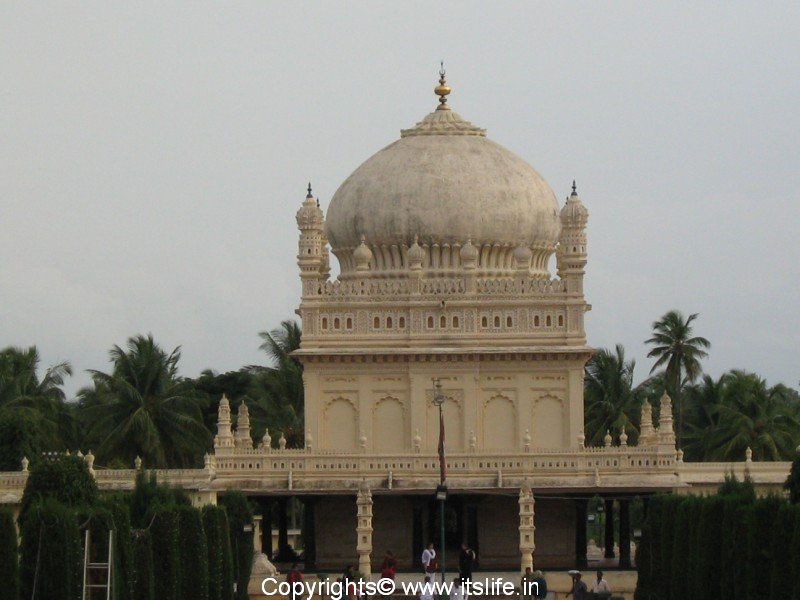
Gumbaz
The Gumbaz was built by Tipu Sultan around 1782-1784. It is built on a raised platform and has open balcony supported by black basalt pillars. The tomb door are intricately carved and engraved with ivory. The tomb itself is imposing and large.Gol Gumbaz
An imposing structure where the mortal remains of Hyder Ali, his wife and Tipu Sultan were confined. This is the most famous monument in Bijapur. It is the largest and most conspicuous building in Bijapur and one of the most celebrated in India. The gumbaz was built during the peak of architectural prowess of the Adil Shahi Dynasti of Bijapur, probably in an attempt to outdo the spectacular tomb of Ibrahim Adil Shah II. The monument was constructed in 1659 by a master builder, Yaqut of Dabul. However the building could not be completed as per the plan, perhaps becoz of construction started towards the end of Adil Shah's reign. It covers an area of 18,225 sq.ft. which is bigger than the better known PANTHEON in Rome which is 14,996 sq. ft. only. Undoubtedly, it is one of the largest single chamber structures in the world. Gol Gumbaz in BijapurAncient mosque, Jama Masjid inside view of Bijapur Mosque
Ibrahim-Rauza Mosque, Bijapur
The Ibrahim-Rauza, built by Ibrahim 'Adil Shah II (1580-1627), consists of his tomb and mosque within a square compound, both rising face to face from a common raised terrace, with a tank and fountain between them. The mosque has a rectangular prayer-chamber, with a facade of five arches, shaded by the chhajja and a slender minaret at each corner. Enclosed within a square fenestration rises the bulbous dome with a row of tall petals at its base. The square tomb with double aisles around it, the inner one pillared, has similar features but is finer in proportions. Two narrow arches, next to the ones at each end, break up its facade. On the interior, each wall has three arches, all panelled and embellished with floral, arabesque or inscriptional traceries. The tomb-chamber has a low curved ceiling made of joggled masonry, with empty space between it and the dome. Historic Bahamani Mosque
Jama Mosque, Gulbarga

Safa masjid is one of the two mosques inside the fort and by far is the best of the 25-30 mosques in the city. The minars, domes and Arches point to a typical fusion of Indo-Sarcenic and Deccan styles of the Architecture.
Temples :
Karnataka is famous for its diversity in temples and the legacies that they hold. Every temple of Karnataka sings the legacy of god and articulates the history of Hindu mythology. Lord Kalabhairaveshwara Temple, Karnataka Chamundeswari Temple, Karnataka Sri Krishna Mutt Temple, KarnatakaKapileshwar Temple appears to be the oldest as of 1204 AD
Sri Hoysaleshvara Temple, Karnataka Sri Dharmasthala Manjunatheshwara Temple, Karnataka Sri Gokarnanatheshwara Temple, Karnataka The Kukke Subramanya Temple Sri Ranganathaswamy Temple The Lotus Jain Temple, Belgaum
Churches :
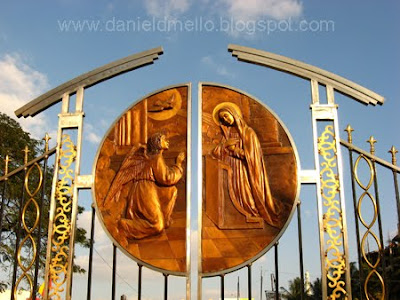
As Karnataka is a beautiful land blessed with breathtaking scenery, verdant landscapes, the Churches also marvelous. Churches in Karnataka like the temples and mosques not only signify the religious tolerance of the region but also the architectural brilliance of the artisans of the bygone era. There are many Churches in Karnataka. Some of the beautiful Churches in Karnataka are the Saint Rozario Cathedral Church which was originally built in 1526 which was later rebuilt in 1910, Milagres Church, Our Lady of Sorrow Church built in 1857 are a few to mention.
St.Marys Basilica View of roof sheer steeple - St. Marys Basilica
Some other churches of Karnataka are the gothic-styled church in Virajpeth in Kodagu, St Mary's Church in Belgaum, St Philomina Church, St Mary's Basilica in Shivajinagar and Saint Mark's Cathedral which was built in 1927.

The architecture of the churches in Karnataka showcase different and unique styles like the beautiful Greco-Roman style the magnificent stained glass windows, tall piers, a spacious prayer hall and imposing structures.

Infant Jesus Church, Bangalore
St. Luke Churches, Bangalore Syrian Orthodox Church, Bangalore.............................
Sunset at LalbaghThanks & Regards, Raj. Kumar
www.keralites.net |
__._,_.___












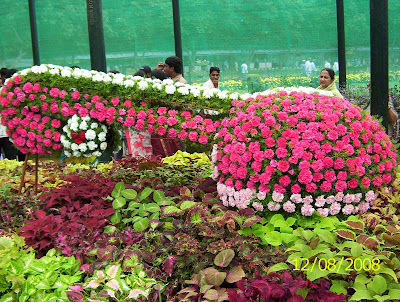


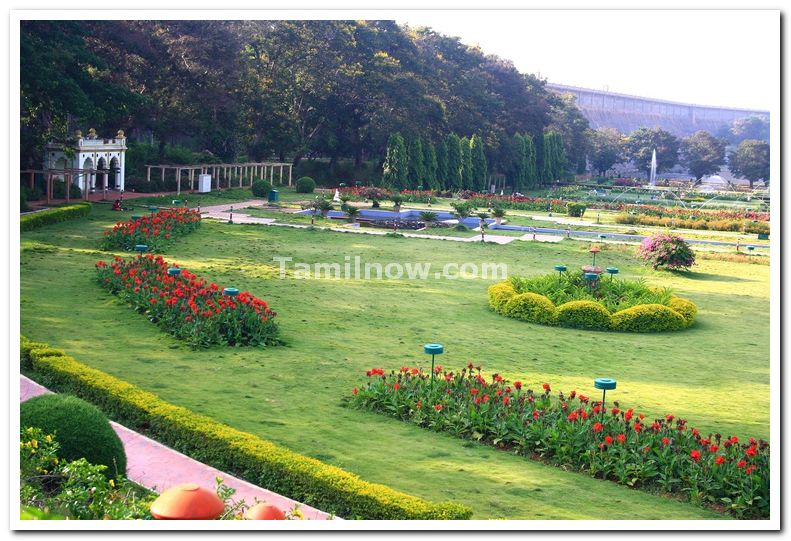







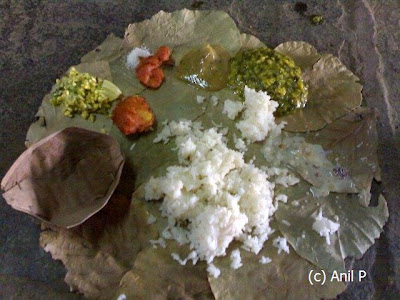









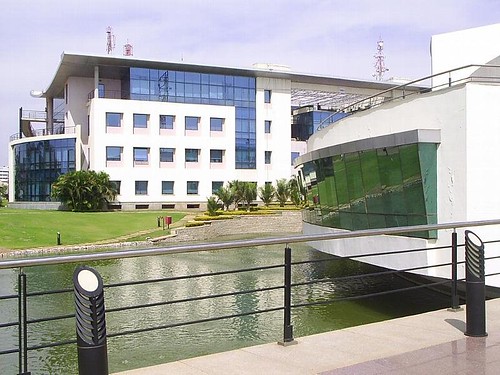
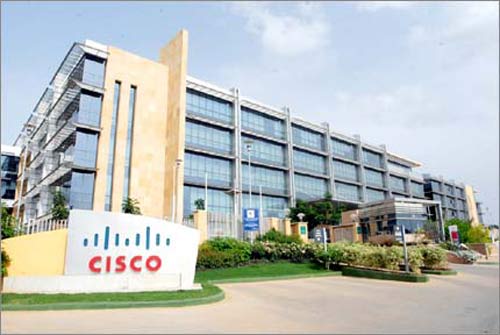
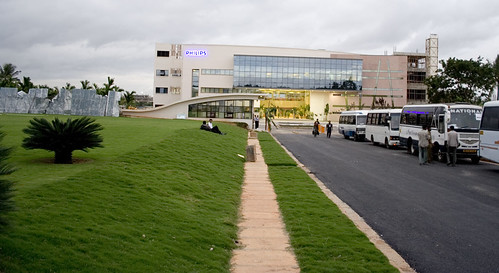







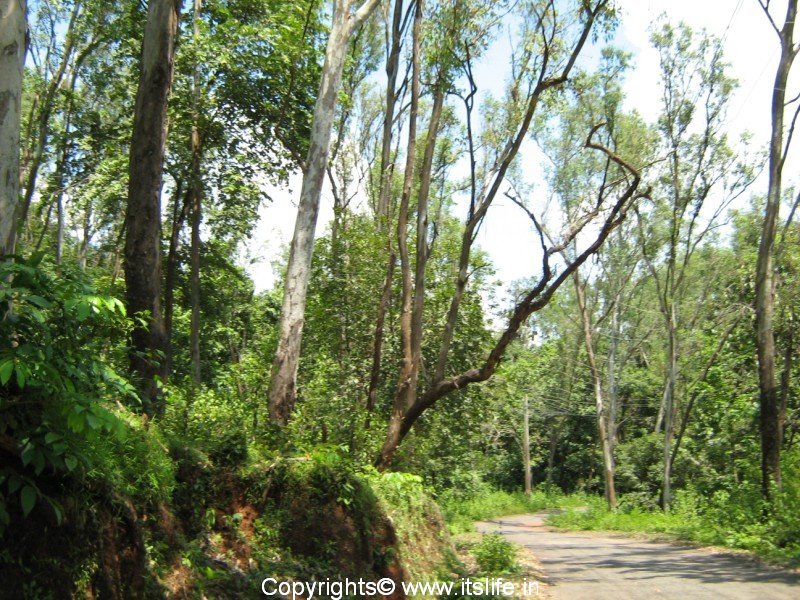






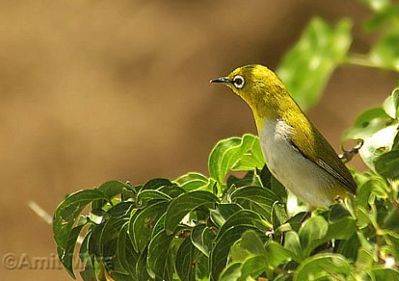






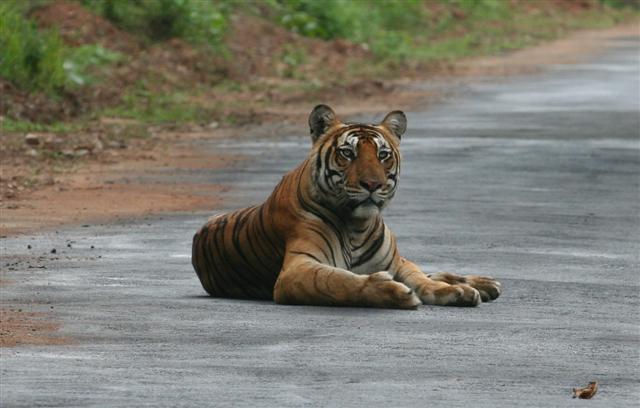




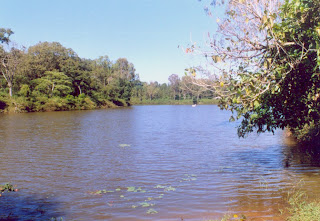
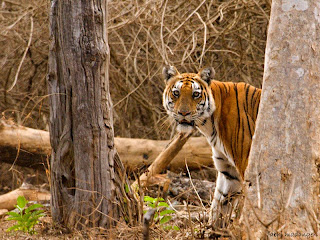


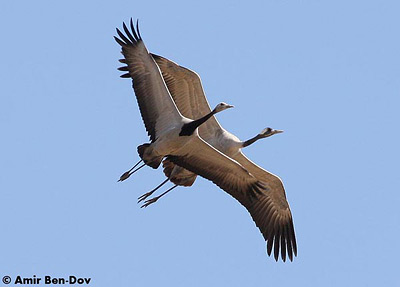






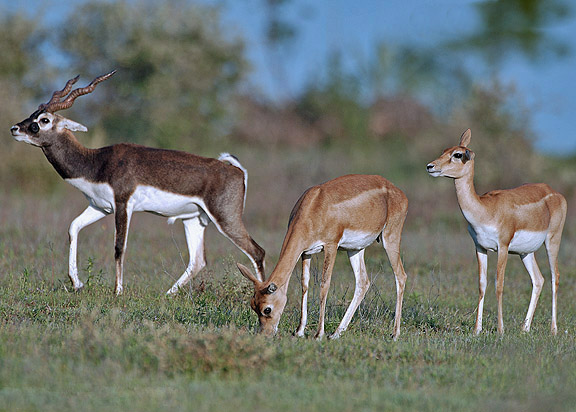

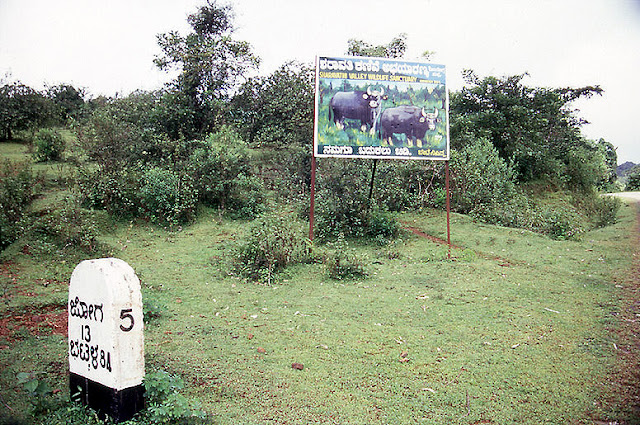

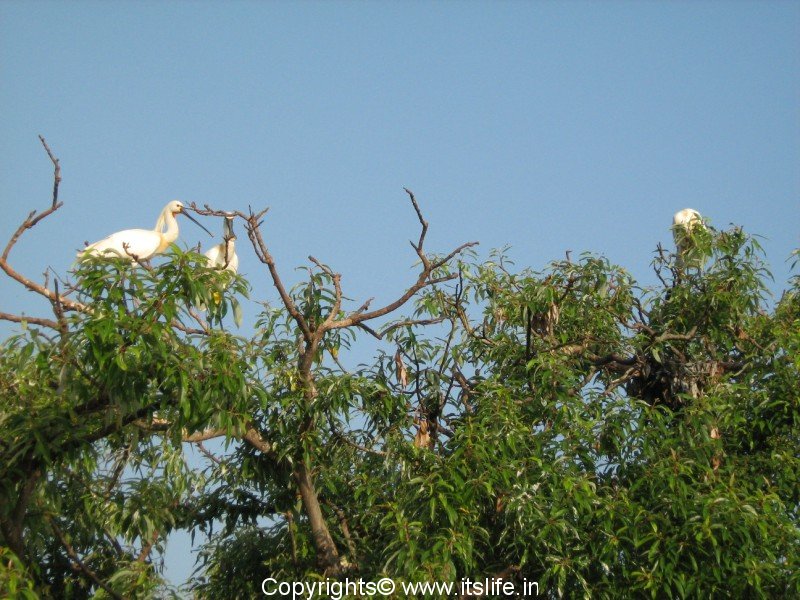
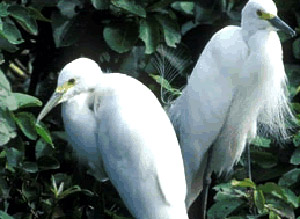
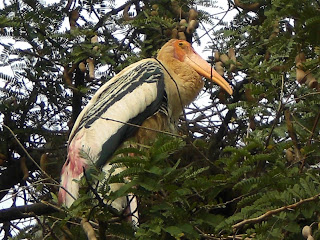






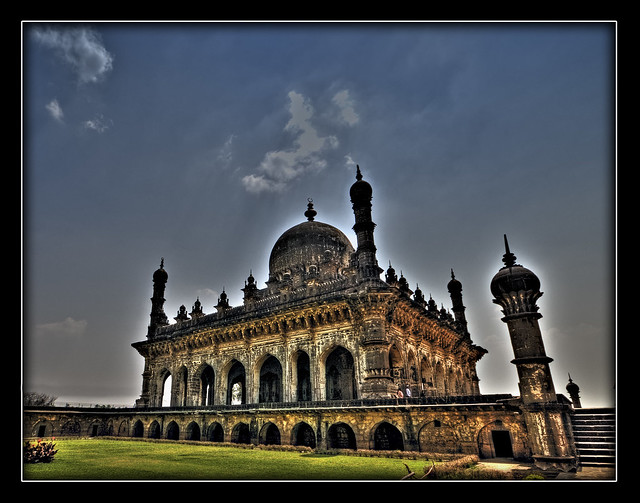






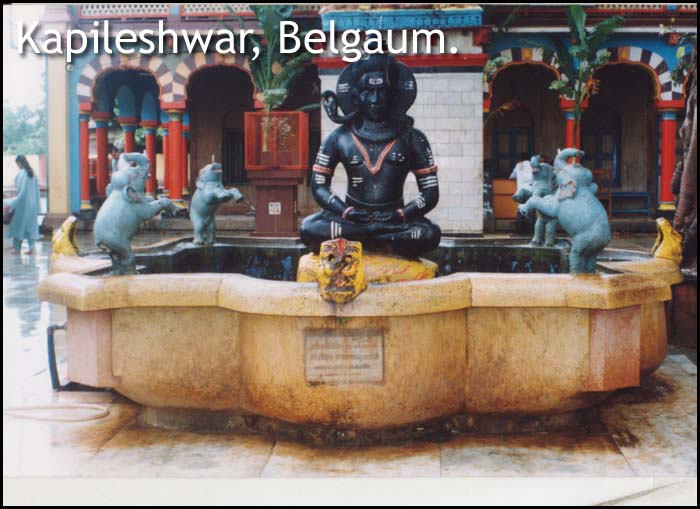





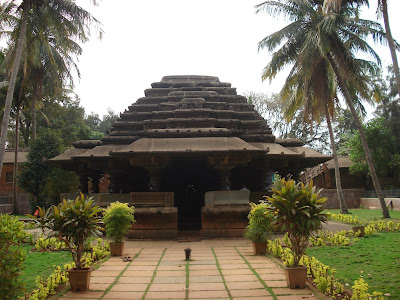
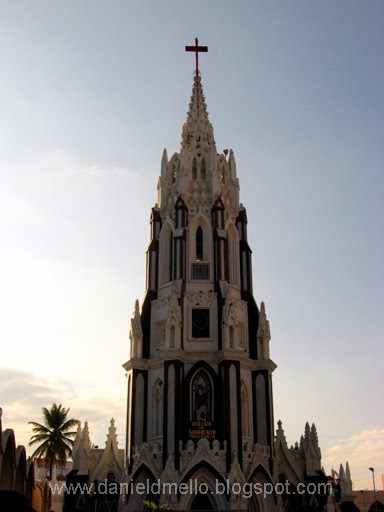
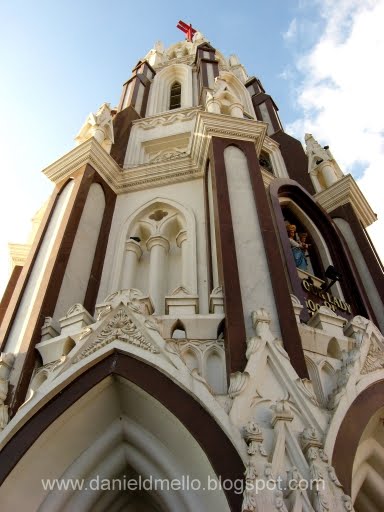







No comments:
Post a Comment